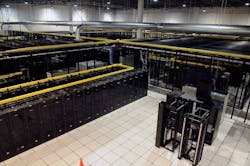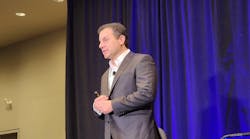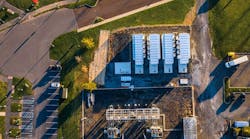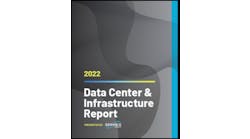This week’s “Voices of the Industry” column is from Harold Simmons, Global Director for Strategy at United Metal Products. Harold discusses the fine art of delivering a successful data center project.
Harold Simmons,
United Metal Products
The process of delivering a new data center build is a multi-faceted one that involves many disciplines. The difference between a successful project where the owner is delighted in the end product and one that is filled with needless difficulties along the way is often related to the atmosphere that exists between the various disciplines involved in the delivery.
The following three principles are characteristic (though not comprehensive) of the interactions that exist between the end users, architects, engineering team, contractors, and suppliers on successful data center projects.
Proactive & Regular Communication
One of the most representative characteristics of successful projects is pro-active communication that takes place on a regular basis. There needs to be constant discussion between the key players involved in the various delivery points on the project. One simple yet effective way to ensure clear communication is for the end user/general contractor to set up weekly calls with the subcontractors and various component suppliers. It is very common for the end user, contractors, and subcontractors to be involved in these weekly calls; however, it as not as common as it should be to invite the major component suppliers to the table. By extending the sphere of communication to the key component suppliers it helps ensure that everyone is on the same page, delivery schedules are on track, and that any changes needed on the project can be addressed quickly throughout the supply chain.
Trust & Accountability
Once the communication lines have been opened it is imperative that there is a culture of accountability & trust established. The contractors need to be able to trust all of the players on the project and the various subcontractors and suppliers need to show themselves to be trustworthy. One aspect of trustworthiness that owners need from their supply chain and contractors is a realistic time frame/delivery schedule for the completion of tasks. If one of the component suppliers has won the job by misleading the owner about lead times there is a ripple effect that can take place throughout the project delivery schedule that can have significant financial effects. This is why it is imperative that component suppliers and sub-contractors be properly vetted in regards to their reputation in the industry. If on a given project one of the material suppliers falls behind schedule they need to communicate this upstream and have a secondary solution to improve the worst case delivery schedule.
Teamwork
At the end of the day the most important thing on a complex construction project is making sure that the owner/end user is satisfied and delighted in the final delivered product. This does not happen without the suppliers, contractors, and other disciplines being committed to this end goal. If everyone is not committed to this goal, suppliers will be quick to shirk responsibility, slow to help the other related disciplines, and there will be a lot of cross discipline finger pointing. A commitment to the end goal of user delight will lead to an atmosphere where the related disciplines are making sure that their alliance partners in the project are successful. An example of this on the HVAC manufacturer side of things has to do with controls. There are times when the end user desires for the manufacturer to integrate 3rd party components and controls into the cooling system. A commitment to end user delight in this case means that the 3rd party controls supplier does everything in their power to provide the HVAC manufacturer the components on time or ahead of schedule. This allows the HVAC manufacturer time to integrate the controls and deliver to the mechanical contractor on time while eliminating needless field work.
End Result = End User Delight
Proactive communication, trust & accountability, and teamwork are nothing earth shattering or new to those of us who have any business experience. That being said, these characteristics are most likely known by all, talked about by many, and unfortunately only implemented effectively by a few. The end goal needs to always be end user delight and satisfaction. Hopefully, by taking a few minutes to reflect on these characteristics we all will be able to better serve the end user community in the delivery of successful data center projects.
Harold Simmons, is the Global Director of Strategy for United Metal Products.





